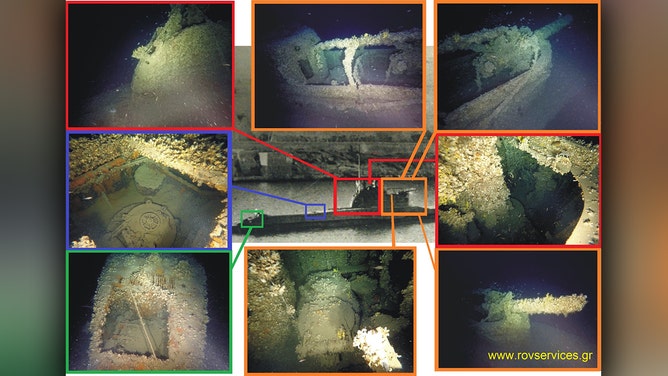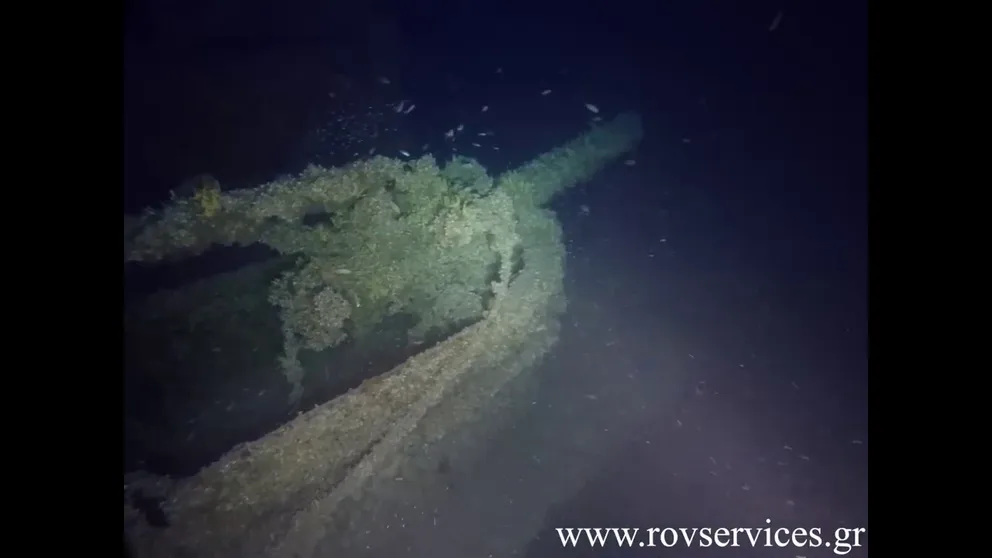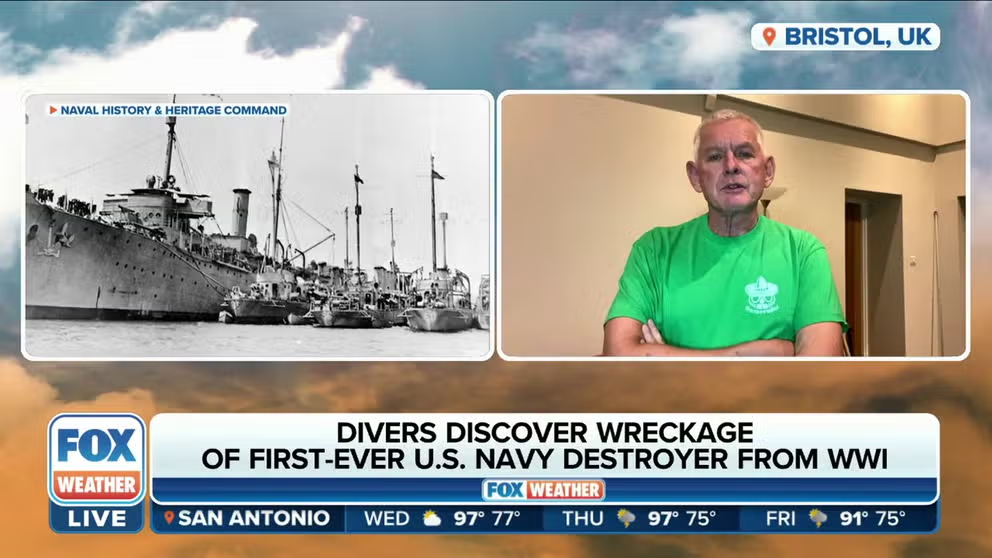'War grave of 64 people': Lost British WWII submarine found in Aegean Sea
After a 25-year search, the mysterious disappearance of British WWII submarine H.M.S. Triumph is coming to light after it was found more than 660 feet below the blue waters of the Aegean Sea.
Lost British WWII submarine found in Aegean Sea
After a 25-year search, the mysterious disappearance of British WWII submarine H.M.S. Triumph is coming to light after it was more than 650 feet below the blue waters of the Aegean Sea.
SOUNION, Greece – It was the hardest mission Greek researcher Kostas Thoctarides said he had ever undertaken.
After a 25-year search, the mysterious disappearance of British WWII submarine H.M.S. Triumph is coming to light after it was found more than 660 feet below the blue waters of the Aegean Sea.
Thoctarides said the sub was initially located with an Echo Sounder with the help of his daughter, Agapi-Oceanis, who is almost 21 years old and the first certified female ROV pilot in Greece.
"The wreck site is treated with respect as it is a maritime war grave of 64 people," said Thoctarides regarding the seven officers, 55 crew members and two commandos onboard.

Thoctarides located the sub with an Echo Sounder with the help of his daughter, Agapi-Oceanis, who is almost 21 years old and the first certified female ROV pilot in Greece.
(Kostas Thoctarides)
Triumph was lost in the blue waters of the Aegean on Jan. 9, 1942. It began its operations in May 1939. It carried out 20 patrols and saw significant successes during its operation, sinking several enemy ships and the Italian submarine Salpa.
Triumph now rests at the bottom of the open sea at a slight, starboard list dozens of miles off the coast.
WRECKAGE OF US NAVY SUBMARINE FROM WORLD WAR II FOUND OFF JAPAN’S COAST

After a 25-year search, the mysterious disappearance of British WWII submarine H.M.S. Triumph is coming to light after it was found more than 660 feet below the blue waters of the Aegean Sea.
(Kostas Thoctarides)
The sub's periscopes and hatches were found down, indicating that Triumph was on a deep dive at the time of its sinking, according to Thoctarides. Depth and directional rudders were also found straight, indicating they were at a steady depth.
"In its tower, you can see the wooden wheel helm, compass, and 4-inch cannon that is slightly raised upwards," Thoctarides said. "The hatches on either side of the cannon leading inside the hull are also shut."
On the fore side of the bridge, Thoctarides said the door leading to the gunnery was open with all the hatches closed. The right torpedo tube was alos opened and a MK VIII torpedo half-out of the submarine.
WAR TROPHY FROM GEORGE WASHINGTON’S ARMY DISCOVERED AMID BRITISH SHIPWRECK
The final cause of the sinking, Thoctarides said, appears to have been a high-power explosion in the front section of the submarine.
Thoctarides was first informed about the history of Triumph in 1998. After an extensive survey in the U.K. and a search of German and Italian archives, he began the mission.
It was the fifth submarine wreck Thoctarides and his underwater project company, ROV Services, has found in Greek waters.
Last patrol in Greece
Triumph departed from Alexandria, Egypt, for its final mission the day after Christmas 1941.
The purpose of the mission was to carry out two special operations as well as conduct an aggressive patrol in a specific area of the Aegean assigned to it by British officials.
On the evening of Dec. 29, Triumph sailed into Despotikos Bay, Greece, before heading out on its last patrol. The following day, the submarine reported an encrypted signal indicating the successful completion of the first phase of its last mission, according to Thoctarides.
That would be the last signal Triumph would send.
British diver helps locate WWI US Navy destroyer sunk by German submarine
Underwater photographer Richard Ayrton on how his diving team the Dark Star discovered the USS Jacob Jones.
On Jan. 9, 1942, at 11:45 a.m., Triumph began its torpedo attack of an enemy ship south of Sounion, Greece.
"Recently, in the same underwater area, we identified three more British Mark VIII torpedoes of the same type with those carried by Triumph and even within range of the attack," Thoctarides said. "This fact leads us to believe that the Triumph launched more than one torpedo during its last attack."
After the attack, Triumph then continued its patrol, making its presence felt in Milos and Naxos, Greece.
Traces of Triumph soon begin to disappear, according to reports. On Jan. 23, 1942, the British Navy sent a naval signal indicating Triumph should be considered lost after patrolling the Aegean.









